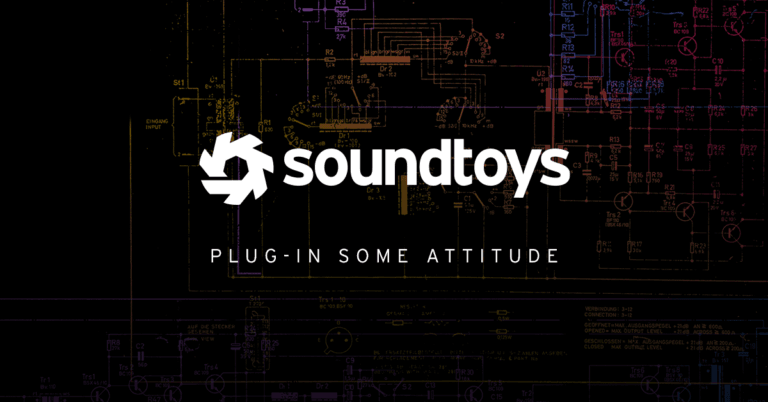
In music technology history, few innovations have been as impactful as ADAT (Alesis Digital Audio Tape) technology. Launched in 1991 by Alesis, ADAT made digital multitrack recording accessible to project studios. It also opened up opportunities for independent musicians. High-quality audio production became available to many. ADAT offered an affordable yet professional sound. It transformed music recording, production, and distribution. It left a lasting influence on today’s audio processes.
What is ADAT Technology?
ADAT was a modular digital recording format. It used Super VHS (S-VHS) tapes to record eight tracks of digital audio at once. Each ADAT machine worked alone but it also synced with up to 15 others. This setup allowed for 128 tracks of digital recording at the same time.
ADAT was revolutionary because of its affordable price point. This made professional-grade digital recording technology accessible to smaller studios and independent artists. Before ADAT, multitrack digital recording systems were prohibitively expensive, often requiring investments of hundreds of thousands of dollars.

The Birth of ADAT: A Bold Move by Alesis
In the late 1980s and early 1990s, Alesis was known for affordable music gear like drum machines and effects processors. The company aimed to fill a significant gap in the market. At that time, digital recording technology was mainly provided by expensive large-format tape systems. Systems like Sony’s DASH and Mitsubishi’s X-Series were only affordable for the wealthiest studios.
Alesis founder Keith Barr wanted to create an affordable digital recording system with professional sound quality. This led to the introduction of the Alesis Digital Audio Tape at the 1991 NAMM Show. Priced at $3,995—much less than other digital multitrack systems—the ADAT quickly gained the interest of musicians, producers, and engineers.
How ADAT Worked
Key Features of the Original ADAT
- Tape Format: ADAT used standard S-VHS tapes to store digital audio. Each tape could hold up to 40 minutes of eight-track audio at 16-bit resolution and a 44.1 or 48 kHz sampling rate.
- Modular Design: ADAT machines are modular. They allow users to connect up to 16 units. This setup allows for a total of 128 digital audio tracks.
- Optical Interface: ADAT created the ADAT Optical Interface (Lightpipe). This interface allows the transfer of eight channels of digital audio through one optical cable.
- Synchronisation: ADAT machines used a unique sync method for perfect timing between units, ensuring sample-accurate precision.
- Ease of Use: The ADAT easily integrates into studio setups and features familiar controls for users of analog tape machines.
Famous ADAT Machines
1. Alesis ADAT (Blackface)
The original model was known as the “Blackface.” It set the standard for digital multitrack recording. It became popular in home studios and small commercial facilities worldwide.
2. ADAT XT
The XT was released in 1995. It improved on the original by offering longer recording times (60 minutes per tape). It also provided better reliability and a more efficient tape transport.
3. ADAT XT20
The XT20 was a big improvement with 20-bit audio resolution, providing better sound quality. It became popular as people wanted better digital recording in the late 1990s.
4. ADAT LX20
This budget-friendly model kept key XT20 features but targeted price-sensitive users, making ADAT accessible to a broader audience.
ADAT’s Impact on the Recording Industry
1. Democratisation of Recording
ADAT revolutionised digital recording. It made it affordable for smaller studios and independent musicians. They produce professional-sounding records without costly studio time.
2. Modular Flexibility
ADAT’s modular design allowed studios to start with a small setup and grow as necessary. Each unit had eight tracks, and more units can be added for more tracks. This flexibility was crucial for studios with tight budgets.
3. Industry Standardisation
The ADAT Optical Interface (Lightpipe) set a new standard for digital audio transfer. It is still commonly used in audio interfaces and digital mixers, showing ADAT’s lasting impact.
4. A Catalyst for Home Studios
ADAT technology emerged alongside affordable synthesisers, drum machines, and MIDI sequencers, sparking the home studio revolution of the 1990s. Now, artists can create entire albums from their bedrooms, skipping the traditional studio setup.
Notable Albums and Artists Who Used ADAT
ADAT became a popular tool for producers and artists in different music styles. Some key projects recorded or partly produced with Alesis Digital Audio Tape include:
- Alanis Morissette – “Jagged Little Pill” (1995): This famous album was mostly produced using ADAT systems.
- Beck – “Odelay” (1996): ADAT played a role in capturing Beck’s eclectic, multi-layered soundscapes.
- Nine Inch Nails: Trent Reznor often used ADAT machines during the production of albums like “The Downward Spiral.”
- Smash Mouth – “Astro Lounge” (1999): The quirky alt-pop sound of Smash Mouth was crafted in part using ADAT technology.
Challenges and Criticism
While ADAT was groundbreaking, it had its flaws.
1. Tape Reliability
S-VHS tapes were meant for video, not audio. They have problems like dropouts and quality loss over time. This issue upset users.
2. Resolution Limitations
The original ADAT machines recorded in 16-bit. Later, 24-bit digital audio systems surpassed them. These systems provided better sound quality and range.
3. Competing Formats
ADAT competed against formats like TASCAM’s DA-88, which used Hi8 tapes and had similar features. Although ADAT sold well at first, other formats gradually took away its market share.
4. The Shift to Hard Disk Recording
By the late 1990s, digital recording systems became popular due to their convenience. Systems like Pro Tools and Cubase offered easy editing and better quality. ADAT machines, which relied on physical tapes, had difficulty competing with these new technologies.
The Decline of ADAT
By the early 2000s, ADAT technology was mostly replaced by hard disk systems and digital audio workstations (DAWs). Alesis tried to keep up with the ADAT-HD24. It used hard drives instead of tape. Yet, it was too late for ADAT to stay dominant. The growth of Pro Tools and other DAWs ended the ADAT era.
Conclusion: A Technological Milestone
ADAT technology was not just a recording format; it changed the game. By making digital multitrack recording affordable, Alesis gave many musicians and producers the chance to be creative. Although ADAT tapes are no longer used, their innovations helped shape today’s digital recording technologies. ADAT will always be important in music production history as a force that changed the industry.



